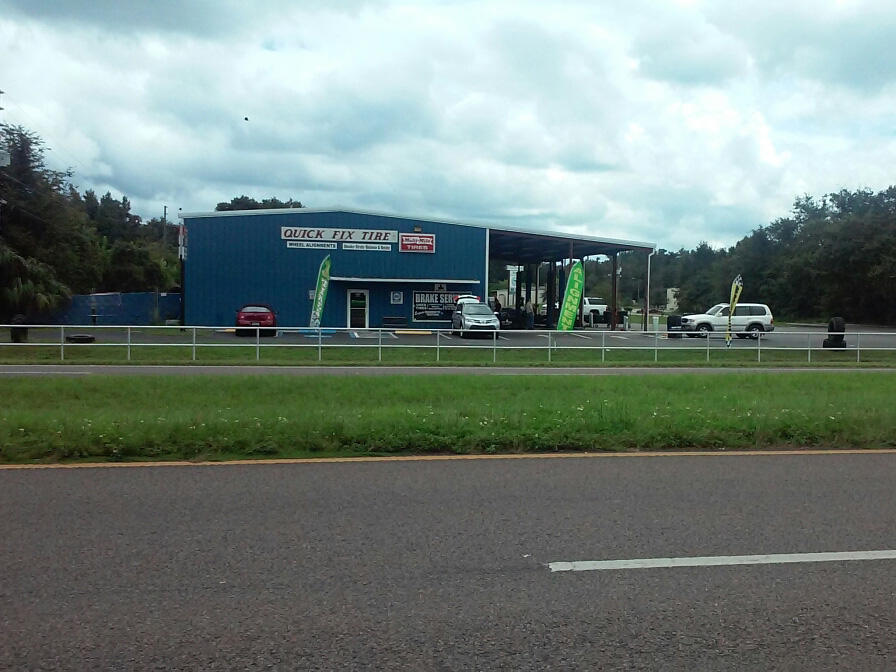In a previous blog, we went through each of the steps necessary to change a flat tire. But what do you do when you open the trunk and find that your spare is flat, too? Or what if in a series of unfortunate events, your spare is punctured shortly after you put it on?
No matter what situation you may find yourself in, it's never a bad idea to have another trick up your sleeve; another way to fix a flat tire when a spare isn't available. Fortunately, there are two methods that are simple, cheap, and effective. Read on as we show you what to do if you have a flat and no spare!
Imagine this: You're on a road trip with the family (and the dog) and you stop at the gas station for a much-needed snack. As you walk back to the car, hotdog in hand, you notice something strange on your front tire - it's the dreaded silvery glimmer of a nail. What's more, the tire looks like it's deflating and sooner rather than later, you'll have a full-blow flat.
As the children grow restless and the dog loses its patience, you think through your options. Unfortunately, the spare tire isn't one of them - it's flat, too. Now what? In most cases, roadside assistance would be the best option, but the whole family can't ride in the tow truck to the tire shop and you don't want to leave them with the dog in the parking lot.
Fortunately, you read a blog somewhere that helped you put together a roadside emergency kit. You fish it out of the vehicle and sift through it to find exactly what you need to get back on the road.
So, what was it you found in your kit that saved the day? There are two main tools you can use to temporarily fix your flat without changing the tire completely (assuming your tire isn't totally ruined): puncture sealant and a tire patch kit.
Regardless of which tool you have on hand, the first step is locating the puncture site.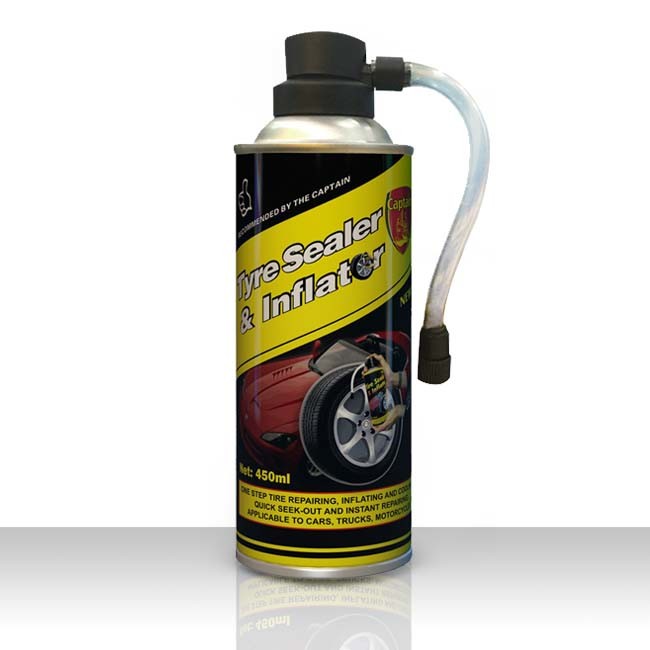 Of course, this won't be particularly difficult if you ran over something like a nail, but finding a hole in a punctured tire isn't always so easy. To locate the source of the leak, try the following:
Of course, this won't be particularly difficult if you ran over something like a nail, but finding a hole in a punctured tire isn't always so easy. To locate the source of the leak, try the following:
Visual inspection. First, you can look over the tire to try and find any obvious punctures or foreign objects (like nails).
Listen. If you don't see anything right away, bring your ear close to the tire and listen for a faint hissing sound.
Feel. Sometimes, an otherwise invisible puncture can be found by holding your hand just above the tire to feel for the leaking air.
Soap and water. If all else fails, try the soap and water method. Fill a bucket with water and add dish soap. Then, carefully coat the outside of the tire until it is covered in suds, either by hand or a spray bottle if you have one. Wait for the leaking air to create a small frothy patch of bubbles - you've found the leak! Mark it and then wash the soapy water away.
Of course, if you find yourself with a flat on the side of the road, you may not have soap, water, and a bucket on hand. However, if you're near a gas station or grocery store, you may be in luck. All you need is a water bottle (or any plastic bottle) and hand soap from a restroom. Simply add the soap to the water in the bottle, shake it up, and gently pour and spread it over your tire!
Now that you've found the leak, let's look at the two most common ways you can fix it.
There are a number of different products on the market that can seal a puncture, and they fall into two main groups. Some brands are a gel-like substance that hardens around the puncture. These products can work well, but they usually require other tools to effectively apply and can be quite messy.
The more common puncture sealant products come in an aerosol can, and don't require anything additional. For our purposes, we'll be focusing on this variant.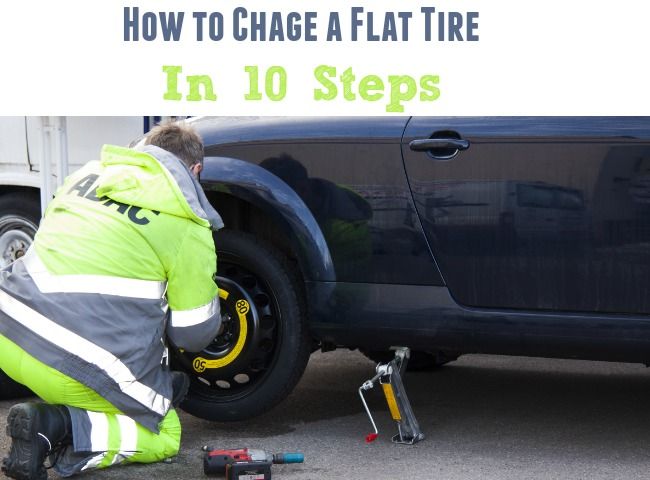 While the specific directions may vary from product to product, they generally work in a similar fashion.
While the specific directions may vary from product to product, they generally work in a similar fashion.
The aerosol cans typically contain a foam or liquid sealant along with extra air. You attach the can to the tire's valve stem with the tube provided and fill it with the sealant, which presumably covers the puncture from within before hardening. Obviously, these products aren't going to fix major punctures or gashes, but they can be a great temporary solution.
Before using a puncture sealant product, make sure to read the can for product-specific instructions. They'll likely look something like this:
Step 1: You'll first need to remove any foreign objects, like a nail, with a pair of pliers.
Step 2: Position the tire with the valve stem at the top.
Step 3: Attach the nozzle on the can of sealant to the valve stem.
Step 4: Press the button and allow the fluid to enter.
Although the can comes with a little extra air, you'll likely need to add more air after the sealant becomes firm.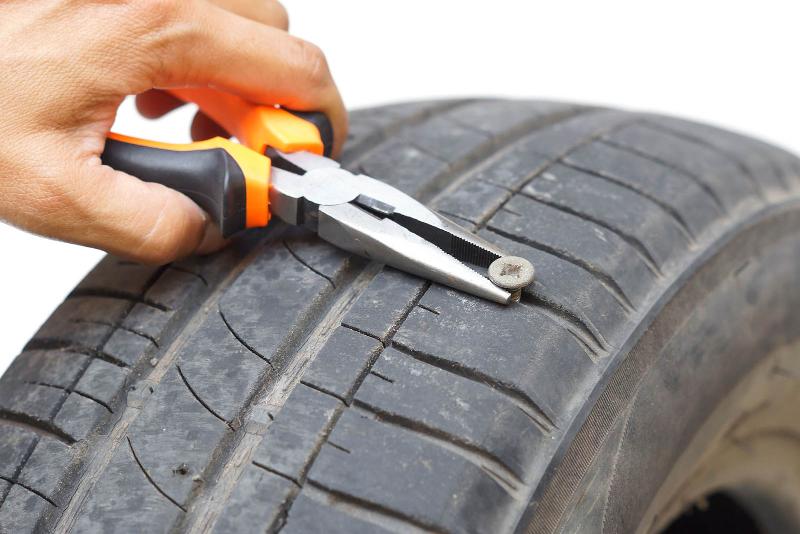 Once you've allowed the sealant time to dry, you can use some of your soapy water to make sure it has done its job and stopped the leak.
Once you've allowed the sealant time to dry, you can use some of your soapy water to make sure it has done its job and stopped the leak.
So how long can you drive with a tire that has been fixed with tire sealant? Although it depends on the product, some manufacturers say you can drive for up to 100 miles. However, most experienced experts will tell you that that estimate isn't realistic, and it certainly isn't advised. Again, tire sealant solutions are meant to be temporary, emergency measures rather than a permanent fix. For that reason, you should make a tire shop your next stop.
That having been said, these little cans can be just the thing you need in a pinch. They're small and inexpensive, so you can potentially keep several in your emergency kit.
A tire plug kit is another tool you can use to temporarily fix a flat until you can replace the tire with a new one. You'll find that there are all sorts of different kits that range from the most basic tools to a collection of implements for every possible scenario.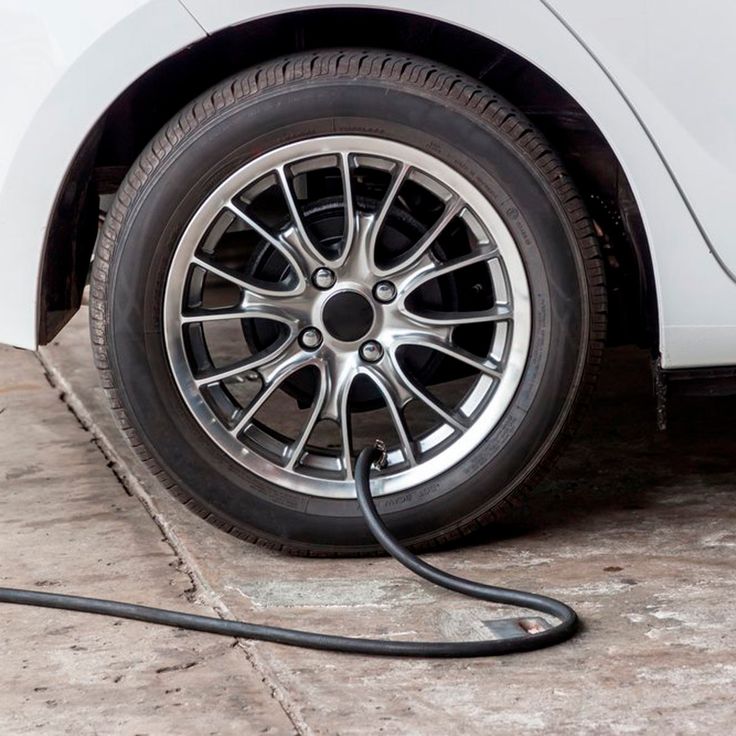 However, the fundamental components you'll need to plug a flat tire are as follows: a rasp tool, a threading tool, the plug itself, and cement or sealant.
However, the fundamental components you'll need to plug a flat tire are as follows: a rasp tool, a threading tool, the plug itself, and cement or sealant.
Some of the larger, more extensive kits will come with pliers to remove foreign objects, a knife to trim the excess portion of the plug, and even work gloves to protect your hands while you make the repairs. While you can get by with the basic components, you'll probably want to have the other items at your disposal anyway. If you don't have them in your roadside emergency kit, it's a good idea to find a tire plug kit that comes with all of the above.
Step 1: First, you'll likely need to remove the tire. This may not be necessary in every case, but you need to be able to have direct access to the puncture point. If your tires are larger, or if the tires take up too much space within the wheel well, you may not have the clearance needed until the wheel is off. For more detailed instructions on how to remove your tire and wheel with a jack and a lug wrench, read our previous blog, "How to change a flat tire in four simple steps.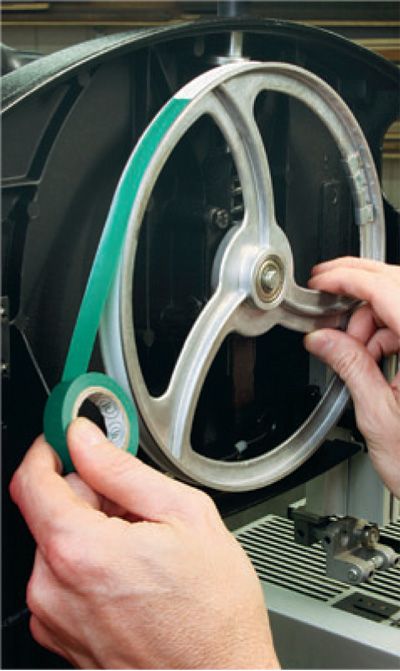 "
"
Step 2: If the object that punctured your tire is still in place, use your pliers to remove it.
Step 3: Use the rasp tool to clean the puncture hole. The rasp tool is a long, pointed piece of metal with a rough, textured end. By quickly running it and out of the puncture, it helps make the hole more uniform, cleaning away stray pieces of rubber, but also providing a rough texture for the plug to grip on to.
Step 4: The insertion tool should look like a long, thin piece of metal with an eyelet at the end (like the head of a really large sewing needle). Thread the plug through the eyelet, and then firmly press the plug into the hole using the insertion tool. Some kits come with a glue, cement, or adhesive product, which you'll want to apply to the plug prior to insertion. Depending on your kit, there should be some portion (like 1/4 - 1/2 inch) of the plug protruding from the hole after insertion.
Step 5: Cut away the excess portion of the plug using your knife. Then, apply a layer of adhesive over the top to seal it in place and cover any small cracks.
Then, apply a layer of adhesive over the top to seal it in place and cover any small cracks.
Step 6: Wait for the adhesive to dry, then apply some of your soapy water to the plug site to test for leaks and fill them in with adhesive if necessary.
Step 7: Before replacing the tire, inflate the wheel to ensure that the plug and seal holds. If it does, you can now place the tire back on the vehicle, fasten it in place with the lugnuts and finish inflating.
How long can you drive with a tire plug? Unlike tire sealant, plugs can potentially last for hundreds of miles, or even years after you apply it. Of course, this depends on the plug, the type and location of the puncture, and how well the plug was installed. Furthermore, depending on the cause of the puncture, your tire may be more prone to flats and blowouts in the future.
No matter what the cause of your flat is, or what method you choose to fix it, the safest option is to visit your local tire shop as soon as possible.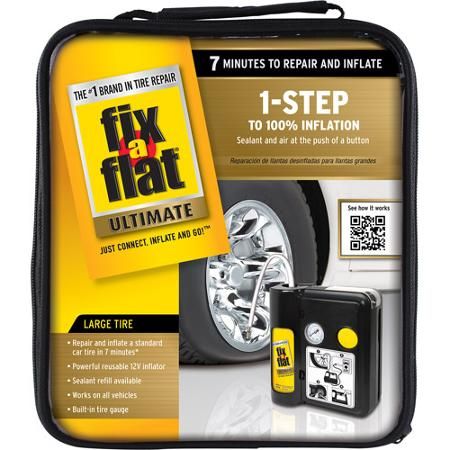 It can be easy to forget about your tires when you're going through your list of auto maintenance tasks. However, taking care of your tires through routine tire maintenance is the best way to avoid flats in the future.
It can be easy to forget about your tires when you're going through your list of auto maintenance tasks. However, taking care of your tires through routine tire maintenance is the best way to avoid flats in the future.
Fixing a flat tire isn't always simple and sometimes, you need a helping hand. When you add Germania's Roadside Assistance Service to your personal auto policy, help is never far away!
Visit our website to learn more about Germania's Auto Insurance products!
Read more: Replacing a tire can be expensive, but your auto insurance doesn't have to be! Check out our blog to learn which auto insurance discounts you should look out for!
Calculate Out-The-Door Price
close
× ‹
All fields are required
Submodel
Select TPMS OptionTPMSTPMS: NOTPMS: YES
WHAT IS TPMS? ">What's this?
">What's this? Enter Zip Code WHY DO WE ASK ABOUT YOUR ZIPCODE?
ZIP code is needed for local pricing.">Why?
Cross Section
Aspect Ratio
Rim Diameter
Enter Zip Code Why?
7980 S Broadway
Littleton, CO
303.515.7308
Most stores are open nights and weekends
Directions
Store Hours:
| Day(s) | Hours |
|---|---|
| MON-FRI: | 7:00am-7:00pm |
| SAT: | 7:00am-6:00pm |
| SUN: | 9:00am-5:00pm |
| CHRISTMAS EVE: | 7:00am-4:00pm |
| CHRISTMAS DAY: | Closed |
Store Details Change Store Find a Store
Schedule An AppointmentLearn more about Oil Changes
7980 S Broadway
Littleton, CO
303.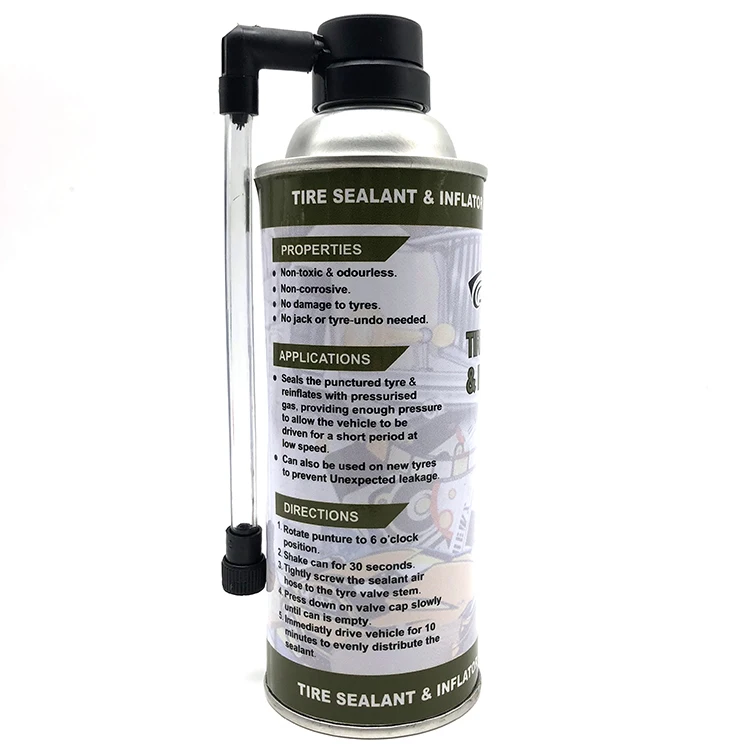 515.7308
515.7308
Most stores are open nights and weekends
Directions
Store Hours:
| Day(s) | Hours |
|---|---|
| MON-FRI: | 7:00am-7:00pm |
| SAT: | 7:00am-6:00pm |
| SUN: | 9:00am-5:00pm |
| CHRISTMAS EVE: | 7:00am-4:00pm |
| CHRISTMAS DAY: | Closed |
Store Details Change Store Find a Store
Schedule An AppointmentLearn more about Brake Service
All fields are required
Engine
Enter Zip Code Why?
All fields are required
Submodel
Enter Zip Code Why?
FIRESTONE HAS BEEN THE NATION'S LEADING TIRE PROVIDER FOR MORE THAN A CENTURY.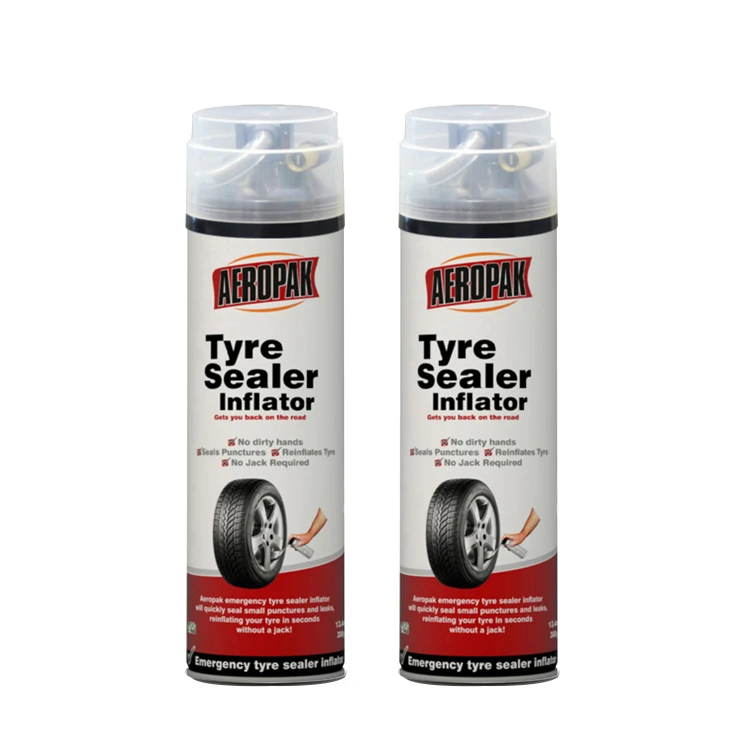
It's a tough road out there, and your tires bear the brunt of potholes, broken glass, nails, screws, and anything else that can puncture a tire. Firestone Complete Auto Care's flat tire repair services are the best in the business. We've been repairing tires since 1926, and we take pride in repairing America's tires. When tire damage strikes, come to Firestone Complete Auto Care–the tire repair shop you can trust.
If you suspect something is wrong with your vehicle's tires, don't hesitate to come into a Firestone Complete Auto Care near you. If your Tire Pressure Monitoring System (TPMS) light is on, you've hit something on the road, your tire is losing air, or maybe something just doesn't feel quite right, bring it in. One of our expert technicians will take a look and tell you if you need to repair or replace your tires.
Driving on a damaged tire can lead to additional (and more costly) rim damage and repairs, so it's best to have your tires examined at the first sign of trouble. The solution might be as simple as needing one of our patch plugs if the tire puncture is addressed early on. In other cases, a leaking valve stem or valve core may need to be replaced with a new one or the TPMS sensor needs to be reprogrammed or replaced. Visit your nearest Firestone Complete Auto Care, and we'll take care of you and your vehicle tire repairs.
The solution might be as simple as needing one of our patch plugs if the tire puncture is addressed early on. In other cases, a leaking valve stem or valve core may need to be replaced with a new one or the TPMS sensor needs to be reprogrammed or replaced. Visit your nearest Firestone Complete Auto Care, and we'll take care of you and your vehicle tire repairs.
Schedule An appointment
Tire Repair & Patching/Plug
If your tires still have life left in their tread and are not over 10 years old, Firestone Complete Auto Care maybe be able repair or patch & plug them to get you back on the road quickly. Keep in mind not all tire damage can be patched if the puncture is too big.
Tire Replacement
Over time, the tread on your tires wears down, leading to compromised traction on the road and potentially dangerous driving conditions. Tires generally need to be replaced every 25,000 to 50,000 miles, depending on vehicle manufacturer recommendations and driving habits.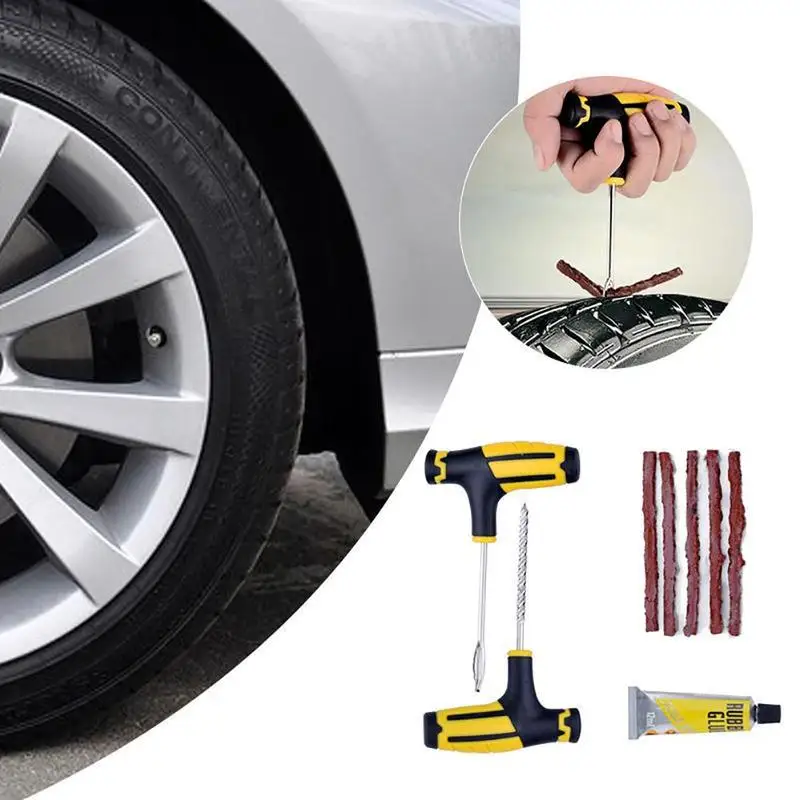
Tire Rotations & Balancing
When you have your tires rotated, you help increase the life of your tires by helping reduce uneven wear. Most vehicle manufacturers recommend a tire rotation about every 5,000 miles or at the manufacturer-recommended mileage. Tire balancing helps ensure weight is evenly distributed around your tires. It's necessary about every 5,000 miles or as recommended by your manufacturer. Balancing can lead to a smoother ride, less tire wear, and reduced strain on the drivetrain. When you think tire balancing, think safe, smooth, and efficient driving.
Wheel Alignments
It's best to have your alignment checked every 6,000 miles or twice a year. Even one misaligned wheel can cause the steering wheel to be off center and can lead to premature wear and tear on your vehicle over time. Keeping everything properly aligned ensures a smoother ride for you and a longer life for your tires.
Flat Repair
A flat or leaking tire can leave you stranded on the side of the road or lead to a situation where you lose control while driving. Take care of flat or leaking tires as early as possible to extend tire lifespan and ensure your tire doesn't leave you stranded.
Schedule An Appointment
All fields are required
Engine
Zip Code Entry Why?
Flat tires rarely happen at ideal times. Let Firestone Complete Auto Care help you with these answers to frequently asked flat tire questions.
To ensure a safe drive that doesn’t damage your rims or create more expensive repairs, change your flat tire with your spare tire before coming into your local Firestone Complete Auto Care center for flat tire repair.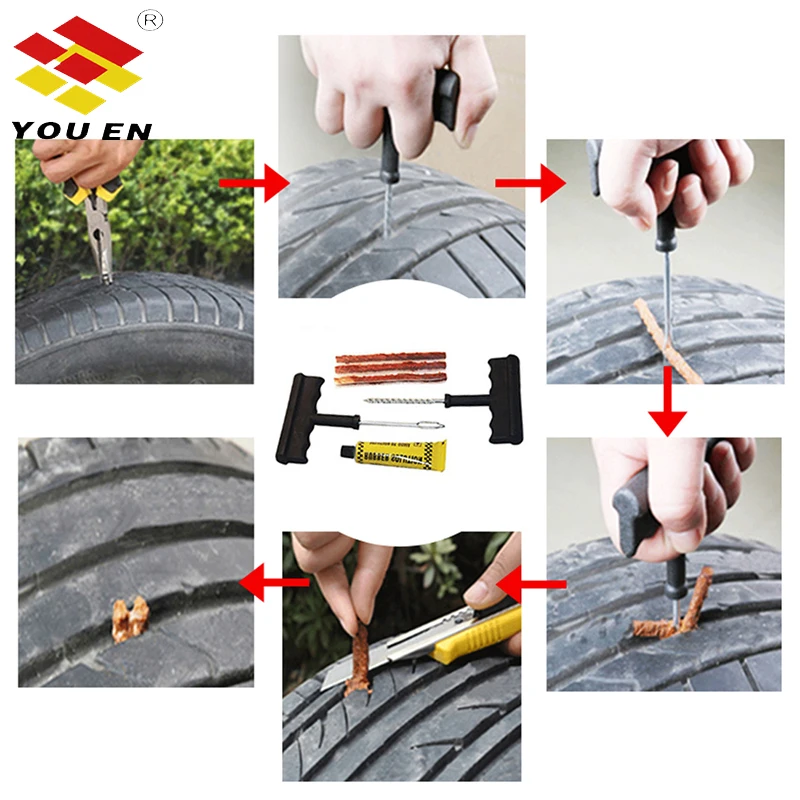
It’s tempting to replace just the tire that's damaged, but replacing one tire at a time can present challenges down the road since the one tire will have a different tread depth and thus different accelerating, braking, and cornering abilities than all of the others.
Few things are more inconvenient than a flat tire —except back-to-back flat tires. Learn the reasons why you keep getting flat tires and what you can do to help prevent flat tires from deflating your spirits!
If your vehicle hits a pothole in the road, you may experience steering and suspension system misalignment and/or damage, tire punctures, bent rims, and more. When your vehicle experiences a sudden jolt from a pothole run-in, timely inspection is highly recommended.
Pothole damage may not be obvious right away, but it can wreak havoc on your entire car if it’s not addressed quickly and fixed right the first time.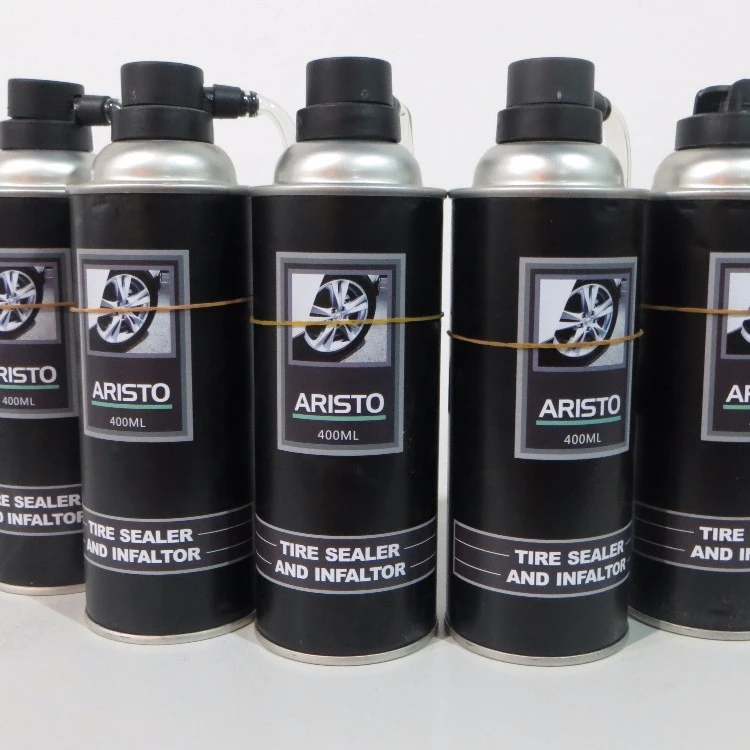 If you've had a recent run-in with a pothole, head to your local Firestone Complete Auto Care for a Complete Vehicle Inspection to check for any issues.
If you've had a recent run-in with a pothole, head to your local Firestone Complete Auto Care for a Complete Vehicle Inspection to check for any issues.
A tire plug is a quick fix for a tire that's leaking air from a nail or similar object that has punctured the tire. A tire plug fills the hole of the tire but is not reliable without a tire patch and not recommended to use alone. A patch is applied to the inside of the tire to further prevent an air leak and helps hold the plug in place. This allows a tire with ample useful life left in it to hold air reliably and keep you on the road for longer.
Run flat tires allow you to drive on a flat tire for a limited time with lesser risk than non-run flat tires. A Run Flat tire could be repaired if a nail or object is caught before tire damage occurs. However, if the tire is permanently damaged, it is required to replace a Run Flat tire with a new one.
The Tire Pressure Monitoring System light will illuminate if tire pressure is too low or part of the TPMS system has malfunctioned. Important TPMS warning light behavior:
Looking for the closest flat tire repair shop? Come to Firestone Complete Auto Care for a tire plug & patch or other tire repair service today!
Read More
Regular tire rotations can help prevent uneven tread wear and help your tires last longer. Schedule a tire rotation appointment at a Firestone Complete Auto Care near you today.
Schedule a tire rotation appointment at a Firestone Complete Auto Care near you today.
Read More
Knowing when to replace tires is as easy as measuring tire tread depth. Learn more about this important measurement and visit Firestone Complete Auto Care!
Read More
Tires
Nov 14, 2022
Need a fresh set of winter tires but don’t know what to look for? We have you covered. Read on to learn about tread patterns, tire compounds, ratings, and more!
Read More
Tires
Sep 19, 2022
What is backspacing in wheels? What about offset? Are they the same or completely separate things? Firestone has the answers you're looking for. Learn more.
Learn more.
Read More
Tires
Aug 19, 2022
What are the symptoms of unbalanced tires, and do yours need balancing? Learn everything you need to know about this often-overlooked aspect of car maintenance.
Read More
LOAD 3 MORE
SHOWING 6 OF 12
View More Articles
{{storeNumber}}
{{storeName}}
{{link-icon "Call Us" mobileCallLink null "call-cta"}} {{link-icon "Directions" directions "_blank" "directions-cta"}}
{{address}}
{{city}}, {{state}} {{zip}}
{{#if activeFlag}} {{#ifCond mystore "or" myPreferredStore}} {{#ifCond storeType 'eq' "TPL"}}
*Call store for appointment {{phone}}
{{else}} {{#if onlineAppointmentActiveFlag }}
{{#if myPreferredStore}}
{{else}}
*Call store for appointment {{phone}}
{{/if}} {{/ifCond}} {{else}} {{#ifCond storeType 'eq' "TPL"}}
*Call store for appointment {{phone}}
{{else}}
Schedule Appointment {{#if onlineAppointmentActiveFlag}} {{else}}
*Call store for appointment {{phone}}
{{/if}}
{{/ifCond}} {{/ifCond}} {{else}}
*Temporarily Closed Due To: {{temporarilyClosedReason}}
{{/if}} {{#if isMilitaryStore}}
*This location is on an active US military base. You may need military ID to access the location.
You may need military ID to access the location.
{{/if}}
{{#ifCond count 'eq' "3"}} Show More Stores {{/ifCond}}
Tire care and damage repair
Proper tire care can significantly increase tire life. With inept or careless care, a new stud can be rendered unusable on the first trip.
The main measures for caring for tires that help increase their service life are:
1) maintaining normal internal pressure;
2) control of the installation of steered wheels;
3) uniform distribution of cargo in the body;
4) skillful driving;
5) keeping wheel rims clean and fitting and removing tires correctly;
6) protection of tires from the harmful effects of petroleum products and sunlight;
7) changing tires in a timely manner;
8) timely repair of tires;
9) storage of tires in proper conditions.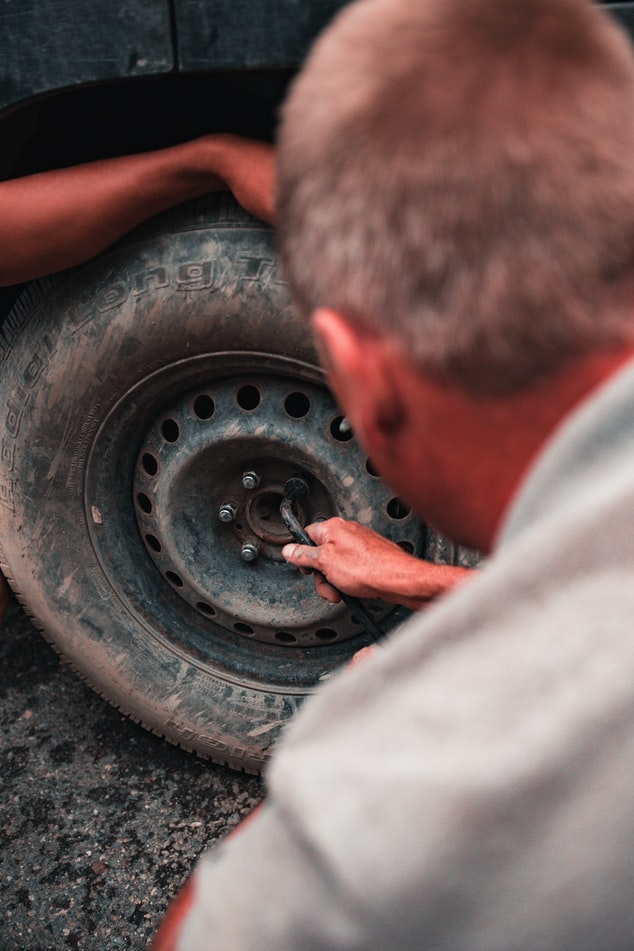
Maintaining normal tire inflation pressure is essential for a long service life. In tires with insufficient internal pressure, the carcass is heavily deformed and quickly destroyed. In a tire with increased internal pressure, the loads on its parts increase, the bearing surface of the tread decreases, and, in addition, the tire absorbs shocks poorly, as a result of which it wears out faster and loads on the chassis of the car increase. The different tire pressures of the twin wheels cause the tire with the higher pressure to be overloaded. Different tire pressures in the front and rear drive axles of off-road vehicles can lead to a change in their rolling radii, which causes increased wear of tires, drive mechanisms and excessive fuel consumption.
Tire pressure must be checked daily before driving.
Checking the installation of the steering wheels is necessary because if the wheels are not correctly installed, the tires begin, in addition to rolling, to slip on the road and wear out quickly.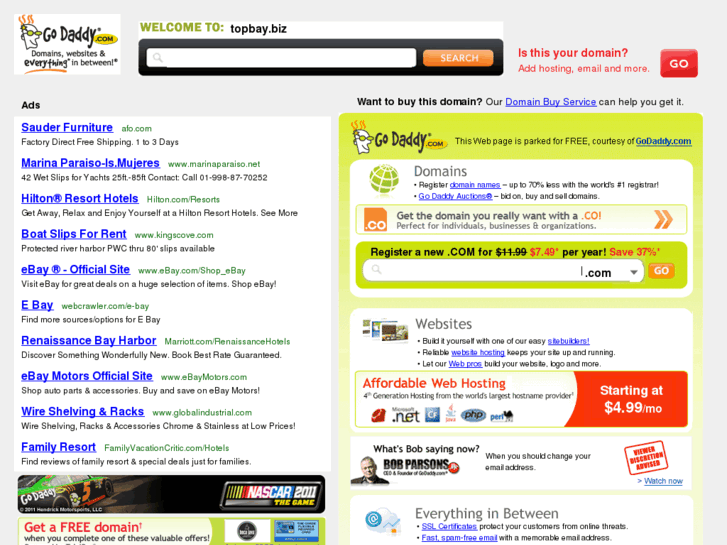
The location of the load in the car body without overloading individual wheels provides a normal and uniform load on each tire, which creates favorable conditions for its operation.
Skillful driving has an extremely important influence on the safety of tires. When driving for a long time at excessively high speeds, the tires overheat, which leads to their increased destruction. When the car brakes hard, pulls off abruptly, and makes sharp turns at high speed, parts of the tire may come off the carcass or the tires may come off the wheel rims. When driving along a path clogged with sharp objects, along tram tracks and arrows, etc., punctures and quick deterioration of rubber are obtained.
Protecting tires from the harmful effects of petroleum products is necessary because fuel and oil corrode rubber and destroy it. Prolonged exposure to moisture that gets inside the tire is also undesirable, as this causes damage to the carcass fabric.
Timely tire rotation ensures uniform and slower tire wear, since the operating conditions of tires on different wheels are different. Tires are rearranged from the rear to the front axles and from the right side to the left and back in a certain sequence, after certain periods, on average, after 5000-8000 km of run. Wheel shift schemes for cars and trucks of various types are shown in fig. one.
Tires are rearranged from the rear to the front axles and from the right side to the left and back in a certain sequence, after certain periods, on average, after 5000-8000 km of run. Wheel shift schemes for cars and trucks of various types are shown in fig. one.
Timely repair of tires with even minor damage can prevent tire failure and reduce the cost of repairs.
Proper storage of tires is also important. When the car is parked for a long time in the garage or during the repair of the car, the tires must be unloaded by hanging the car on the goats so that the wheels do not touch the floor; tire pressure should be reduced. It is recommended in such cases to remove and hand over the tires for storage. Tires should be stored in a dark, dry place. Tires should be placed in a vertical position on the racks, periodically turning them, and the cameras should be hung in a slightly pumped up state on semicircular hangers.
Tubeless tires must be stored in special packaging with bead spacers to avoid crushing the tire beads.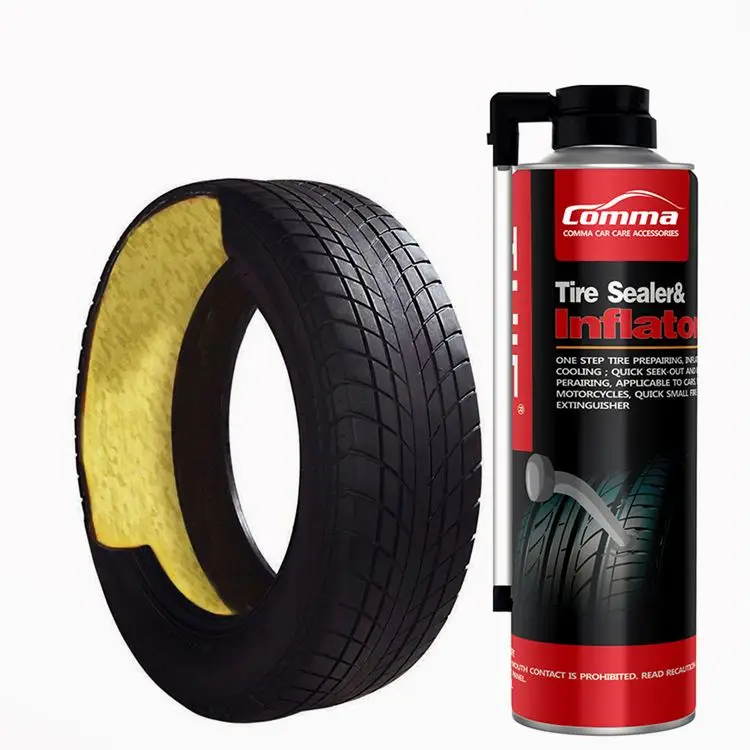
Old tires should be collected and returned as they are repaired or retreaded and used in the manufacture of new tires.
The main tire failures are air pressure drop in them, punctures, blowouts and tire wear. With a slow drop in air pressure in the tires, check the tightness of the valve spool and its tightness. A rapid drop in pressure indicates a puncture. In the event of a puncture, the tubed tire should be removed from the wheel and inspected to determine the cause of the puncture and then repaired. The puncture site in the chamber is determined by inflating it with air by listening or by lowering it into water by the release of air bubbles. A puncture of the chamber on the way, if necessary, is eliminated by applying a patch to the chamber, which can be glued in a cold way or using vulcanization briquettes.
The patch is applied cold with rubber adhesive. It is obtained by dissolving rubber in high-quality gasoline. The edges of the place of significant damage to the chamber should be cut and a patch of such a size should be cut out of the old chamber in order to completely cover the damaged area. The surface of the chamber around the puncture and the patch are first wiped dry with a clean cloth, dried and treated with a rasp or a metal brush so that the rubber is clean and rough. A layer of rubber glue is applied to the cleaned rubber surface and rubbed with a stiff brush. After the first layer has dried, after 15-20 minutes, a second layer of glue is applied with a soft brush. After the glue dries, the patch is applied to the chamber and rolled well. Then the patch is sprinkled with talc.
The surface of the chamber around the puncture and the patch are first wiped dry with a clean cloth, dried and treated with a rasp or a metal brush so that the rubber is clean and rough. A layer of rubber glue is applied to the cleaned rubber surface and rubbed with a stiff brush. After the first layer has dried, after 15-20 minutes, a second layer of glue is applied with a soft brush. After the glue dries, the patch is applied to the chamber and rolled well. Then the patch is sprinkled with talc.
When using a vulcanization briquette, after cleaning the chamber with a rasp or a metal brush, a special patch is applied to it, which is included in the briquette kit. A metal cup is placed on the patch and pressed strongly against the camera with a clamp. A briquette is placed on the cup and set on fire. After cooling, the cup and clamp are removed. Under the influence of pressure and heat, the patch adheres tightly and firmly to the chamber, as the patch vulcanizes. After applying the patch, it is necessary to check the tightness of the chamber.
Fig. 1. Tire swap pattern: a - a car; b - truck
A damaged tire must be felt inside by hand and any sharp objects found should be removed. In case of significant damage to the tire, it is necessary to lay in it a cuff of the appropriate length (temporary measure), made from the carcass of the old tire. The edges of the cuff should be cut flush. A damaged tire in the garage needs to be replaced.
Small (nail, up to 5 mm in diameter) punctures in tubeless tires can be repaired on site without removing the tire from the wheel. If, after a puncture, the pressure in the tire does not drop due to the sealing of the puncture site with the inner rubber layer of the tire, you can continue driving without removing the nail. And then, at the first opportunity, remove the nail and repair the tire using a special first aid kit. At the same time, the puncture hole is cleaned with a rasp, filled with adhesive paste using a syringe, and a rubber plug of the appropriate diameter is inserted into the puncture.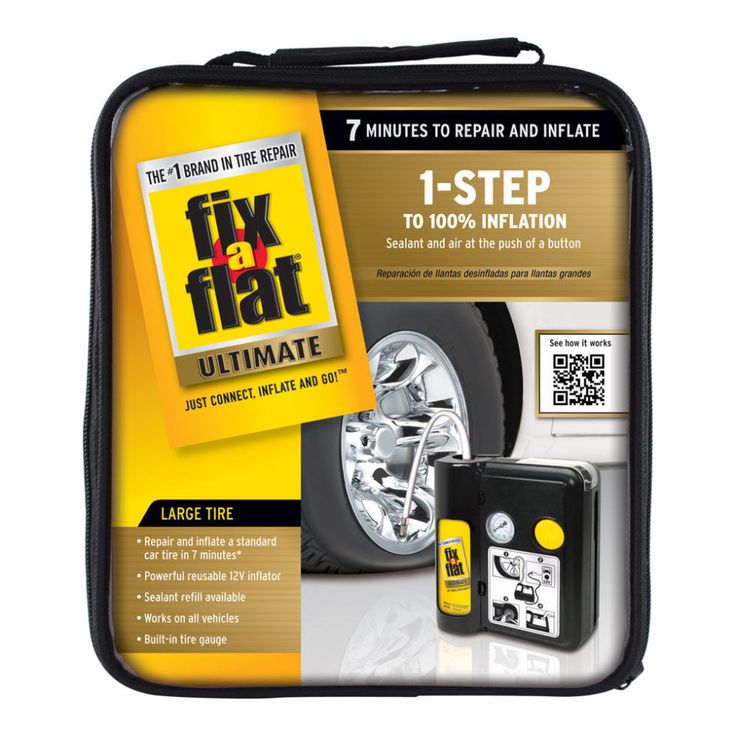 In case of significant damage, the tire must be returned for repair.
In case of significant damage, the tire must be returned for repair.
Tires are repaired in repair shops using hot vulcanization on special vulcanizing machines.
Braces are an effective method of treating dentoalveolar anomalies. However, not everyone is ready to wear fixed structures that are visible to others for a couple of years. In this article, you will learn about methods for correcting an overbite without braces for both children and adults. They will help you get straight teeth, avoid gum sensitivity, and digestive difficulties.
 They only need to be worn for a few hours, day and night.
They only need to be worn for a few hours, day and night. Depending on the age of the patient and the type of problem solving, there are several types of trainers:
Trainers are often used for children to help them get rid of bad habits, correct malocclusion. However, they are great for adults who have small gaps in their teeth and don't want to wear visible braces.
For treatment, an examination will be required to accurately identify defects.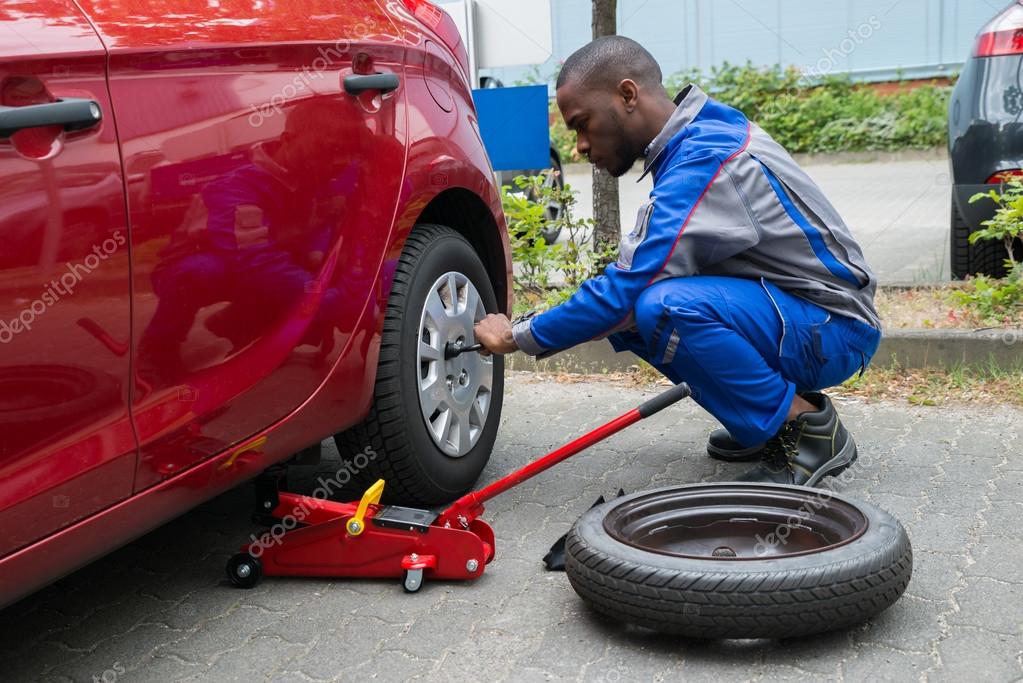 After the impressions are taken, the production of a test model will begin. When it is possible to choose the most successful design in terms of size and functionality, the doctor will give advice on wearing and care, and set the date for the next visit.
After the impressions are taken, the production of a test model will begin. When it is possible to choose the most successful design in terms of size and functionality, the doctor will give advice on wearing and care, and set the date for the next visit.
Put on the trainer as follows:
A regular brush is sufficient for thorough cleaning of the device. You need to rinse the trainers in warm water without adding any chemicals. For storage, a special container is used, which is often included.
Surgical correction of occlusion is an opportunity to get rid of toothache, speech disorders, prevent the development of diseases of the gastrointestinal tract, when classical orthodontic constructions do not help. Manipulations are carried out inside the oral cavity, which avoids scars on the face.
Manipulations are carried out inside the oral cavity, which avoids scars on the face.
Surgical intervention is required in the following cases:
However, before you correct the bite of the lower jaw, eliminate the consequences of severe injuries or solve other problems, you need to remember about contraindications. Surgery is possible only from the age of 18. It is prohibited in case of blood diseases, cardiovascular and nervous systems, diabetes mellitus, infectious diseases.
Before the operation, a complete examination is carried out, the causes of the deformity are determined, and the future face of the correct shape is modeled. Taking into account the results obtained and the created model, the doctor draws up a treatment plan, determines further actions, depending on specific problems.
The rehabilitation period lasts from 5-6 months. To prevent complications, you will have to drink a course of antibiotics. Despite the difficulties, surgical intervention can effectively eliminate congenital or acquired defects of the jaw and occlusion. A person gets a beautiful smile and correct speech, restores chewing function.
Alena Drapaka,
Dentist, orthodontist:
“Each of the methods described above is suitable for correcting an overbite without braces. If you need to get rid of crowding or gaps between the teeth, it is worth installing mouthguards. Trainers help to eliminate the causes of this problem.